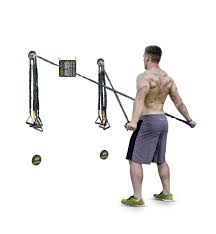






Sub-Acute Injury – Phase II
Repair Stage: 3 Days to 6 Weeks
A soft tissue injury is termed as sub-acute injury when the initial acute phase makes a transition to repairing the injured tissues. This phase commonly lasts up to six weeks post-injury when your body is busy laying down new soft tissue and reducing the need to protect your injury as the new scar tissue begins to mature and strengthen.
The sub-acute phase is characterized by the movement of phagocytic cells to break down and eat up the broken parts at the site of injury. In response to scar tissue formation (glue) being laid down, injured blood vessels become sticky and adhere to the cell surfaces. The fibrosis (scar tissue) can inadvertently glue neighboring structures together. This is termed an “adhesion” and can cause tissues to tug and pull on one another.
Neutrophils from the immune system are the first cells to infiltrate the site of injury. As inflammation continues, macrophages predominate, actively eating up and removing damaged cells or tissues. If the cause of injury is eliminated, the sub-acute phase of inflammation will be followed by a period of tissue repair. If the work-related action or sport-specific motion is continuing to cause re-injury, chronic conditions will result.
Once repaired, the damaged tissues are regenerated or replaced with fibroblasts, collagen, or endothelial cells and phase III of healing can begin.
Management During Repair Phase:
Sub-Acute Injury Treatment may include combinations of:
Local Modalities – Modalities can be used to assist pain reduction and assist in the healing response. These modalities have short-term benefits that can assist by lessening pain and inflammation. Soft tissue modalities such as EMS (electrical muscle stimulation), TENS machine, ultrasound, vibration therapy, heat/ice packs, etc. are all examples that may help in the repair phase of healing.
Soft Tissue Therapy – Manual therapies such as Active Release Technique (ART) treatments, massage therapy, dry needling all help soft tissues regain flexibility and help decrease the chance of re-injury. This will help the healing tissue regain function and decrease your chances of re-injury. They help in two important ways. First, by lengthening the injured tissue that has been shortened. Second, increased blood flow and oxygen help the tissues regain endurance and strength.
Joint Mobilization – Joint stiffness is a complication associated with both joint and adjacent muscle, tendon and/or ligament injury. Specific joint adjustments can be made to help restore normal range of motion to a stuck segment. Chiropractic adjustments are specific and low force treatments that are very safe and effective in manually restoring a joint to its correct alignment.
Protective Strapping / Support / Bracing – Support may be needed as the injuries heal. Ankles, feet, and knees are weight-bearing joints and may need support in order to avoid flare-ups or further injury. If inflammation and pain persist, the tissue will heal less strong and will be susceptible to re-injury.
Exercise Prescription – Exercise prescription has been shown by researchers to be the most effective method to improve post-injury function. Progressive plans and isolation exercises may be needed to transition the injured tissues back into more normal functions. Measuring this process will prevent re-injury and allow the tissues to repair to their fullest potentials.
- Specific stretching exercises
- Strengthening exercises: isometric/concentric
- Proprioceptive retraining
- Biomechanics correction
- Function or sports-specific rehabilitation
